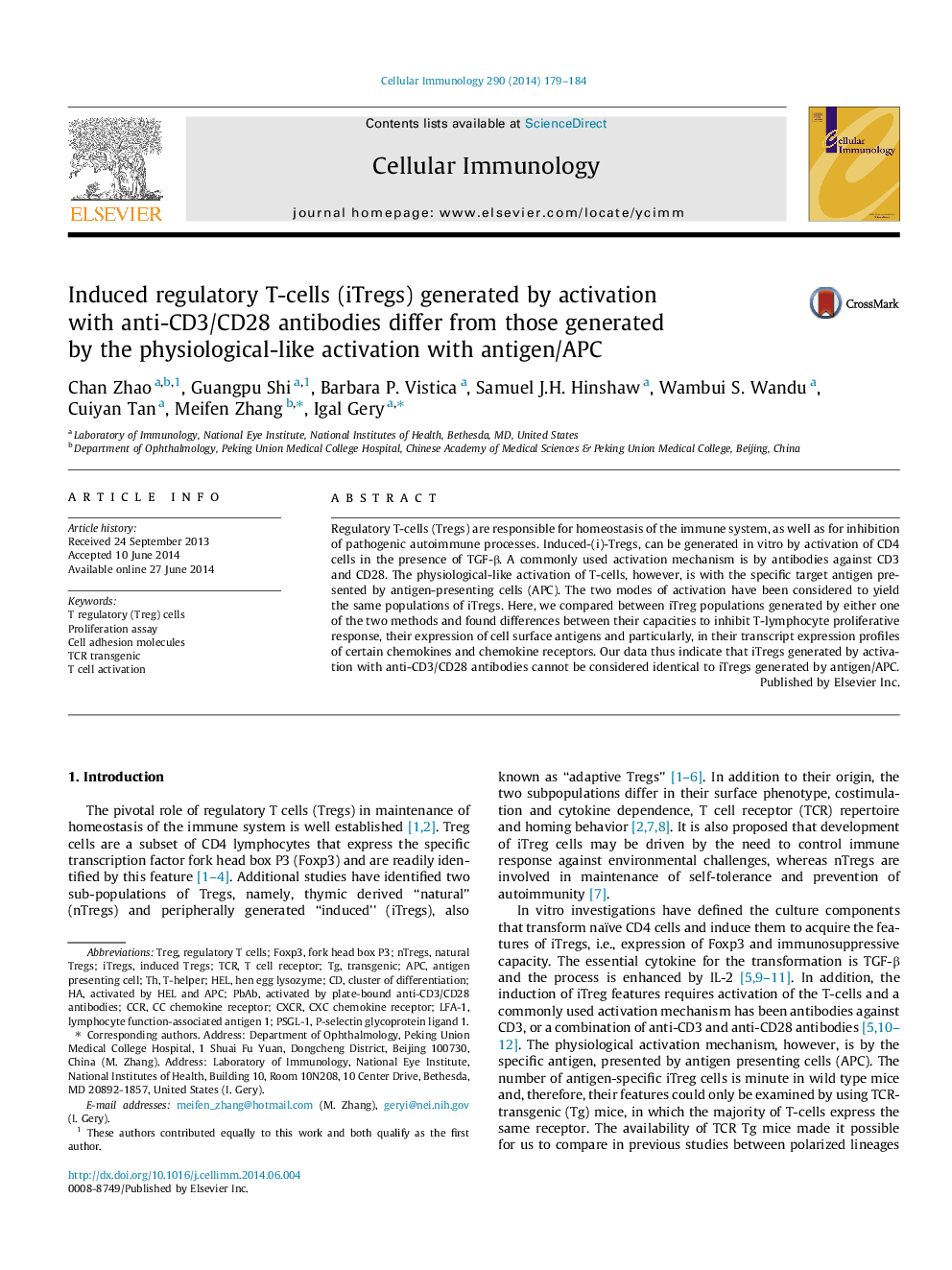| Article ID | Journal | Published Year | Pages | File Type |
|---|---|---|---|---|
| 8463819 | Cellular Immunology | 2014 | 6 Pages |
Abstract
Regulatory T-cells (Tregs) are responsible for homeostasis of the immune system, as well as for inhibition of pathogenic autoimmune processes. Induced-(i)-Tregs, can be generated in vitro by activation of CD4 cells in the presence of TGF-β. A commonly used activation mechanism is by antibodies against CD3 and CD28. The physiological-like activation of T-cells, however, is with the specific target antigen presented by antigen-presenting cells (APC). The two modes of activation have been considered to yield the same populations of iTregs. Here, we compared between iTreg populations generated by either one of the two methods and found differences between their capacities to inhibit T-lymphocyte proliferative response, their expression of cell surface antigens and particularly, in their transcript expression profiles of certain chemokines and chemokine receptors. Our data thus indicate that iTregs generated by activation with anti-CD3/CD28 antibodies cannot be considered identical to iTregs generated by antigen/APC.
Keywords
CCRP-selectin glycoprotein ligand 1Natural TregsnTregsPSGL-1iTregsCXCRT-helperTregFOXP3TCrLFA-1APCProliferation assaylymphocyte function-associated antigen 1hen egg lysozymeTransgeniccluster of differentiationRegulatory T cellsantigen presenting cellT cell activationcell adhesion moleculesHELT cell receptorCXC chemokine receptorCC chemokine receptor
Related Topics
Life Sciences
Biochemistry, Genetics and Molecular Biology
Cell Biology
Authors
Chan Zhao, Guangpu Shi, Barbara P. Vistica, Samuel J.H. Hinshaw, Wambui S. Wandu, Cuiyan Tan, Meifen Zhang, Igal Gery,
